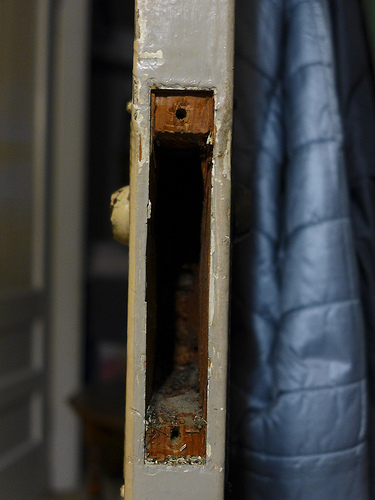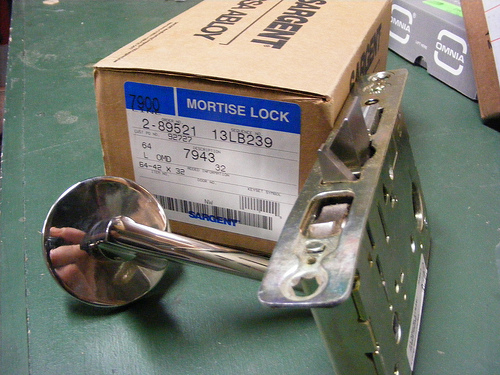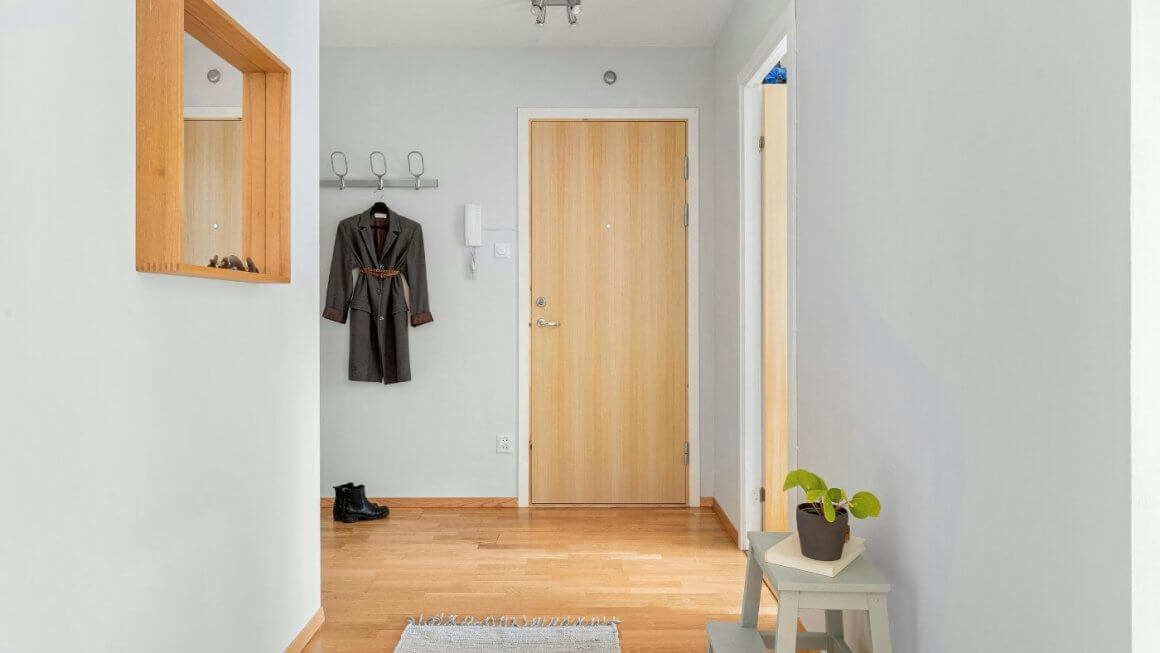Mortise locks are not used as commonly as standard cylinder locks, but they do have several advantages. A mortise lock is a far stronger lock than a cylinder lock, and it offers much better protection against burglars and other intruders. In addition, their classical appearance makes them more aesthetically pleasing, especially for people who live in period properties.
There are two kinds of mortice lock on the market. Sashlocks have a door catch and a locking bolt, while deadlocks only feature the bolt. Most homeowners prefer the sashlock, because this has a door spindle, meaning that the door can easily be opened from the inside, even without the key.
Installing a mortise lock is a much more complex process than installing a cylinder lock. If the task is not performed correctly, you could ruin your entire door. Because the mortise lock takes up much more space inside the door, careful drilling is required.
Tools Needed
- Drill
- Spade bit and side-cutting bit
- Pencil
- Screwdriver
- Ruler
- Chisel
Time Required
Two hours
Step by Step Instructions
The first step is to mark out the door ready to drill holes for the lock:
- Before you can install the lock you must prepare the door and the frame for drilling. Start by checking the size of the spade bit. Hold the spade against the widest section of the interior of your chosen mortise lock. The spade should be very slightly wider than the bit. Do not choose a spade bit that is too wide. If you use a bit that is wider than the outer lip of the lock then you will drill a hole that is too big. It is better to start too small and have to enlarge the hole than to drill a too-large hole from the outset.
- Hold the lock up against the door in the spot where you want the lock to sit once it is installed. The entire lock, including the outer lip, should sit within the door once the installation is complete. Hold the lock firmly so that the face of the lock aligns perfectly with the door’s edge. Do not allow any part of the lock to protrude from the edge of the door.
- While holding the lock in place with one hand, use a soft pencil or a marker to mark the drill holes. Place the first mark just below the hole in the faceplate, above the prong that extends from the plate to the door. Place the second mark below the interior of the faceplate. The second mark should have the same orientation towards the faceplate hole and the prongs. The third mark should go on the back of the lock, at the depth to which you want the hole to be drilled. Err on the side of too deep with this, because a too-shallow hole will cause the lock to protrude and make it difficult to close the door.
Next, you must carefully drill the hole into the door.
- Measure the distance between your markings to determine the depth and the height of the holes that you need to drill.
- Make two markings on the face of the door, which will correspond with the marks on the edge of the door.
- Measure the width of the door’s edge, and draw a line down the middle, to help with centering the lick.
- Measure from the top of the spade bit on your drill to the depth of the hole that you want to drill. Apply tape from the base of the bit up to this mark, so that the amount of exposed drill bit is just enough to allow you to drill an appropriately deep hole.
- Drill some holes, up to the appropriate depth, along the center line marking on the edge of the door. These holes should be very close to each other, but must not overlap.
- Change from the spade bit to a side-cutting drill bit. Using the side-cutting bit, carefully cut out the remainder of the holes. Work slowly and methodically. Do not rush this part. Periodically test the lock by attempting to slide it into position. Once the hole is in the right place, and is the right size, the lock will slide into place.
- Once lock slides into place, trace around the outer lip with your pencil. Remove the lock from the notch, and chisel away a small section of the doors edge, so that the face of the lock becomes flush with the edge of the door. Finally, reinsert the lock, and screw it into place.
Next, you will need to fit the door handle or the key plate and the striker plate. When doing this, measure the screw holes carefully and make sure that the screw holes line up with each other on both sides of the door. Use appropriately sized screws, and check the length of the spindle carefully. You may need to remove the spindle and shorten it to ensure that the handles fit flat against both sides of the door.
Fitting a striker plate for a mortise lock is the same as fitting a striker plate for any other kind of door. Simply extend the bolt by turning the key into the lock position, and gently close the door. Mark the position of the bolt on the frame, and then transfer those marks onto the door jamb. Use these marks as the reference point for fitting the strike plate. Mark the screw holes with a pencil, and draw around the plate, then chisel out a small recess from the frame, so that the strike plate is flush with the jamb. Finally, screw the strike plate in place and test the door.
A Few Tips
When drilling out the hole for the lock, start small and gradually make the hole bigger. Re-test the holes regularly. Give yourself plenty of time so that you are not tempted to drill one large hole. There is no margin for error when drilling into the side of the door. If you make a hole that is too big, you could permanently damage the door.
Conclusion
Installing mortise locks is a difficult task, and is not something that a beginner should attempt. If you are not completely confident in your DIY abilities, then you should call in an expert locksmith. Do not take the risk of fitting the lock yourself if you are inexperienced, especially if you have a high quality or period door. It is better to pay a locksmith than have to replace the entire door because of a simple mistake.







